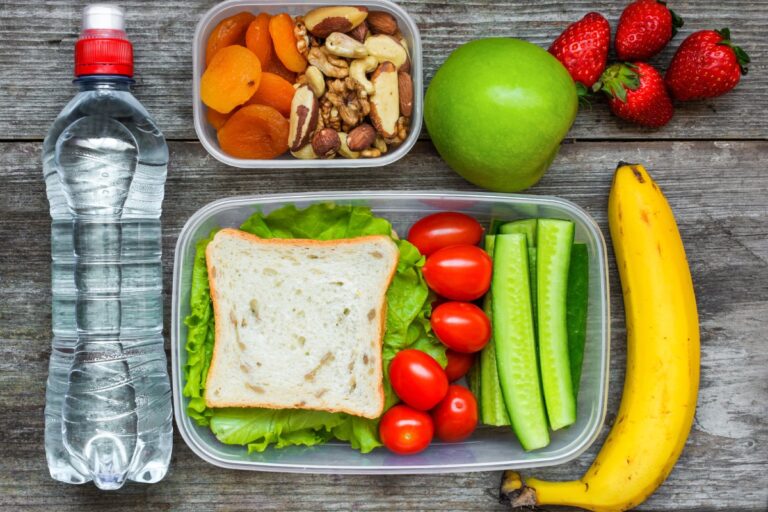10 Pickling Recipes for a Healthier, Happier You
Fermentation is an ancient culinary art that has found a modern audience. This timeless technique not only enhances flavor and preserves food but also boosts nutritional value. Why are more people turning to fermentation, and how can you start this beneficial practice in your own kitchen?
What Is Fermented Food?

Fermented foods are created through controlled microbial growth and enzymatic conversions of food components. This process typically involves bacteria or yeast converting organic sugars into alcohol or acids, which act as natural preservatives. The result is a food that is rich in flavor and longevity.
Where It Originates

Fermentation has roots in various cultures across the globe, each with its unique methods and traditional foods. It’s believed to have started over 10,000 years ago, potentially with the advent of bread and alcoholic beverages. Over centuries, it has been integral in creating staple foods in almost every culture, from European cheeses to Korean kimchi.
What Are the Benefits?

Fermented foods are supercharged with probiotics—beneficial bacteria that play an essential role in digestive health. These foods are often higher in essential vitamins and minerals and can contribute to a healthier immune system. They also help preserve food without the need for artificial preservatives, aligning with a more natural, healthier diet.
Why It’s Popular Now

In today’s health-conscious world, fermented foods have gained popularity due to their health benefits, particularly regarding gut health and immunity. Additionally, the rise of do-it-yourself culture in cooking means more people are keen to try fermentation at home to create wholesome, flavorful foods with long-lasting shelf life.
10 Beginner-Friendly Recipes for Homemade Pickles, Kimchi, and More

Fermentation is a wonderful way to not only preserve food but also to enrich its nutritional value and introduce exciting new flavors into your diet. These 10 recipes provide a straightforward path into the world of fermentation, perfect for beginners looking to explore this age-old culinary practice.
1. Basic Sauerkraut

Shred cabbage and sprinkle with salt, massaging the salt into the cabbage to release its natural juices. Pack the cabbage tightly into a jar, ensuring the liquid covers it completely. Seal and let it ferment at room temperature for a few weeks, opening occasionally to release gases and press the cabbage down to keep it submerged.
2. Simple Kimchi

Combine chopped napa cabbage, Korean radish, green onions, garlic, ginger, and a paste made from Korean chili flakes and fish sauce. Mix well and pack tightly into a jar, ensuring the vegetables are immersed in their juices. Let the mixture ferment at room temperature for a few days, then move it to the refrigerator to slow down the fermentation process.
3. Easy Pickled Cucumbers

Slice cucumbers and layer them with dill and garlic in a clean jar. Prepare a brine of water and salt, pour it over the cucumbers to cover them, then seal the jar. Store in a cool, dark place for at least one week to allow the flavors to develop.
4. Homemade Yogurt

Heat milk to just below boiling, then allow it to cool to lukewarm. Mix a small amount of active yogurt into the milk to inoculate it with beneficial bacteria. Keep the mixture warm, around 110°F, for several hours until thickened, then refrigerate.
5. Quick Beet Kvass

Cube beets and place them in a jar with salt and enough water to cover. Seal the jar and let it sit at room temperature for a few days, allowing the natural fermentation to develop. The resulting kvass can be consumed as a nutrient-rich drink.
6. Fermented Lemonade

Mix fresh lemon juice, sugar, water, and a splash of whey or another starter culture in a jar. Stir until the sugar dissolves, then cover loosely and let it ferment at room temperature for a few days. Chill before serving for a refreshing, probiotic-rich beverage.
7. Coconut Yogurt

Blend coconut milk with probiotic capsules, ensuring the mixture is well combined. Pour into a clean jar and cover, then let it sit in a warm place for 24-48 hours until the yogurt has thickened to your liking.
8. Kombucha

Prepare sweetened tea and cool it to room temperature before adding a SCOBY (symbiotic colony of bacteria and yeast). Cover the container with a breathable cloth and let it ferment in a warm, dark place for 7-10 days. After the initial ferment, bottle the kombucha with additional flavors if desired, and let it carbonate for a few more days.
9. Sourdough Starter

Mix equal parts flour and water in a jar, stirring until smooth. Cover the jar with a cloth that allows air to pass but keeps out contaminants. Feed the starter daily with equal parts of flour and water to maintain its activity and develop the sour flavor typical of sourdough.
10. Water Kefir

Dissolve sugar in water in a jar, then add water kefir grains. Cover the jar and allow the mixture to ferment at room temperature for about 48 hours. The resulting beverage can be flavored with fruit or juice and consumed for its probiotic benefits.
Dive Into Fermentation

These recipes are just the beginning of what can be a rewarding culinary adventure. Fermentation not only adds depth and flavor to foods but also offers numerous health benefits. Enjoy the process and the delicious results of your fermentation experiments!
Banned in the USA: 14 Everyday Items We Can’t Have

Ever feel like America’s rulebook was written by someone with a dartboard? Across the pond or down under, things get even wackier. Let’s take a walk on the wild side of global “Do’s” that are definite “Don’ts” in the Land of the Free. Are you ready to find out just how bizarrely different the world can be? Banned in the USA: 14 Everyday Items We Can’t Have
Gone From the Shelves: Why 18 American Staples Vanished

Over the years, various foods that were once staples in American kitchens have been banned or are no longer allowed to be sold due to health, environmental, or ethical reasons. Here’s a list of 18 such items, detailing why they’ve been pulled off the market. Do you remember any of these? Gone From the Shelves: Why 18 American Staples Vanished
Eat & Drink at Your Own Risk: 20 Foods to Keep Away From Your Family

When it comes to food and drinks, not all choices are created equal. Some items on the shelves are so bad for your health that they’re almost legendary. Here’s a list of some of the absolute worst food and drink products—specific brands included—that you might want to avoid at all costs if you care about your nutritional intake. Eat & Drink at Your Own Risk: 20 Foods to Keep Away From Your Family
Featured Image Credit: Shutterstock / Milan Ilic Photographer.
The content of this article is for informational purposes only and does not constitute or replace professional advice.
The images used are for illustrative purposes only and may not represent the actual people or places mentioned in the article.







